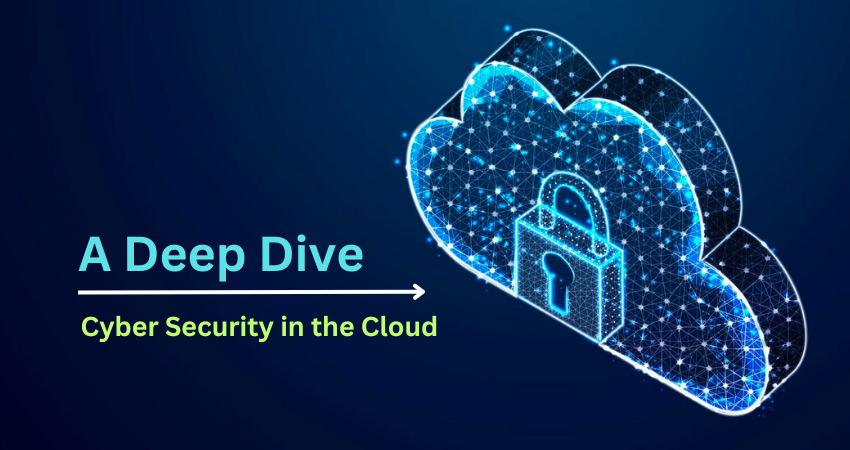Table of Contents
- Introduction
- Understanding Cloud Security Basics
- Key Cloud Security Concepts
- Cloud Service Models and Security
- Best Practices for Cloud Security
- Emerging Trends in Cloud Security
- FAQs
- What is the shared responsibility model in cloud security?
- How does data encryption work in cloud security?
- What are the key differences in security considerations between different cloud service models like IaaS, PaaS, and SaaS?
- What are the emerging trends and technologies in cloud security, such as zero trust and AI/ML?
- What are the best practices for securing cloud environments?
- Conclusion
- Read More Articles
Introduction
Cloud computing has transformed the way organizations handle their data and operations. Yet, with this transformation comes a critical concern – the security of data and systems in the cloud. In this comprehensive exploration, we will delve into the crucial aspects of safeguarding your digital assets within cloud environments.
Understanding Cloud Security Basics
What is Cloud Security?
Cloud security encompasses a set of strategies, technologies, and policies devised to protect the integrity and confidentiality of resources, data, and infrastructure hosted in the cloud. It stands as a foundational pillar for organizations embracing cloud solutions.
The cloud operates on a shared responsibility model, where cloud service providers and users each have distinct roles in ensuring security. While providers secure the underlying infrastructure, users bear responsibility for safeguarding their applications and data. Understanding and properly addressing this shared responsibility is key to establishing effective cloud security.
Threat Landscape in the Cloud
Contrary to some beliefs, the cloud is not impervious to security threats. Common vulnerabilities include misconfigurations, data breaches, and insider threats. Real-world incidents like the infamous Capital One breach serve as stark reminders of the critical importance of robust cloud security measures.
Key Cloud Security Concepts
Authentication and Identity Management
Authentication, the process of confirming user identities, plays a pivotal role in cloud security. Robust identity and access management (IAM) solutions are central to controlling user access and permissions, thus mitigating the risk of unauthorized entry.
Data Encryption in the Cloud
Data encryption stands as a cornerstone of cloud security. It shields data both at rest and in transit, rendering it indecipherable to unauthorized individuals. Properly managing encryption keys is imperative to maintaining the confidentiality and integrity of data.
Network Security in the Cloud
To fortify cloud security, Virtual Private Clouds (VPCs) are employed to establish isolated network environments. Network security groups and firewalls further bolster protection, thwarting unauthorized access and countering Distributed Denial of Service (DDoS) attacks.
Cloud Service Models and Security
Infrastructure as a Service (IaaS)
With IaaS, organizations maintain control over their virtual machines and storage. Securing these resources involves implementing stringent security measures, spanning from the operating system to the application layer.
Platform as a Service (PaaS)
PaaS, while abstracting much of the infrastructure management, introduces new security challenges, particularly related to application security. Effective security practices must extend to safeguarding applications within the PaaS environment.
Software as a Service (SaaS)
The ubiquity of SaaS applications is undeniable, but they can introduce data security risks. Consequently, data protection and compliance adherence become paramount when utilizing SaaS solutions.
Best Practices for Cloud Security
Security Policies and Compliance
Crafting and enforcing comprehensive security policies are essential. Ensuring compliance with industry-specific regulations such as GDPR and HIPAA is instrumental in preserving data privacy and security.
Security Automation and Orchestration
Security automation streamlines security operations, enhancing efficiency while reducing the potential for human errors. Tools like AWS Security Hub and Azure Security Center automate security monitoring and response, ensuring a proactive approach.
Incident Response and Monitoring
A well-defined incident response plan is a cornerstone of cloud security. Continuous monitoring, thorough auditing, and advanced threat detection mechanisms are pivotal components of a robust cloud security strategy.
Emerging Trends in Cloud Security
Zero Trust Security
The zero trust model challenges traditional notions of trust within network architectures. It operates on the assumption of no implicit trust, requiring continual authentication and authorization. This makes it an apt choice for safeguarding cloud environments.
AI and Machine Learning in Cloud Security
Artificial intelligence (AI) and machine learning (ML) offer advanced threat detection capabilities. These technologies can swiftly identify and respond to security threats in real-time, significantly enhancing the security posture of cloud environments.
FAQs
How does data encryption work in cloud security?
What are the key differences in security considerations between different cloud service models like IaaS, PaaS, and SaaS?
What are the emerging trends and technologies in cloud security, such as zero trust and AI/ML?
What are the best practices for securing cloud environments?
Conclusion
Securing your digital assets in the cloud is an ongoing journey. As the cloud landscape continues to evolve, so too do the threats. By gaining a deep understanding of the fundamentals of cloud security, adhering to best practices, and staying attuned to emerging trends, organizations can navigate the cloud securely and confidently. Elevate cloud security to a top priority to protect your invaluable data and ensure the continuity of your operations.
Read More Articles
Ransomware Demystified: How to Defend Your Data
Incident Response: How to React When Breached
Cyber Security for Kids: Keeping Your Family Safe
Weekend Warrior: Your Cyber Security Checklist
Cyber Security DIY: A Weekend Project


Your article helped me a lot, is there any more related content? Thanks!